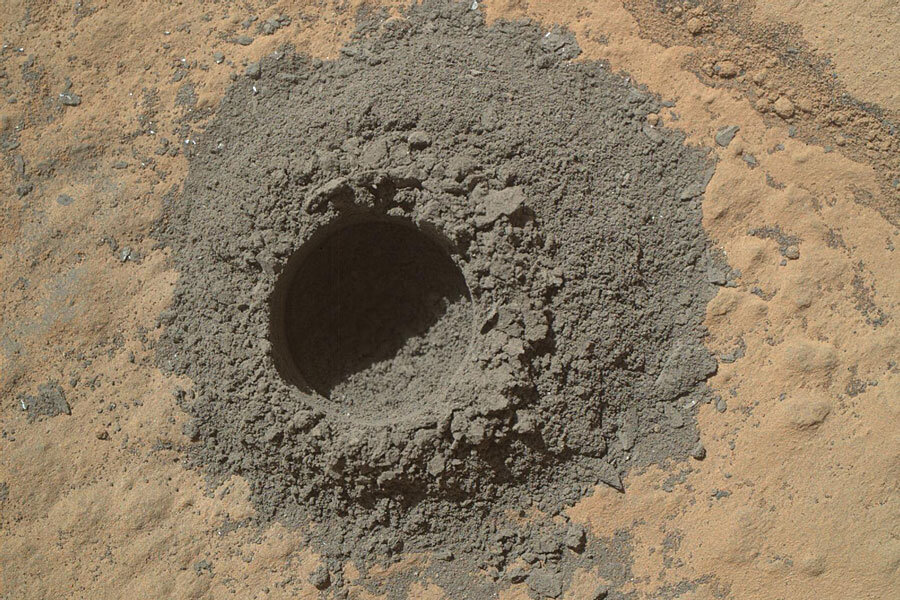Mars excavation yields unexpected color
Loading...
NASA's Curiosity rover has extracted its third sample of Martian dust, this time from a windswept patch of rockscape that geologists hope will divulge new insights into the Red Planet's past. News of the successful drilling arrived on Earth Tuesday, via a Mars-orbiting satellite that keeps in touch with the rover.
"Sample on board! Drilling complete on my 1st sandstone target, analysis underway," chirped Curiosity's Earthly Twitter feed on Tuesday afternoon.
After drilling a two-and-a-half inch hole into the surface of a flat rock dubbed "Windjana," the vehicle's external drilling apparatus passed the dust into its on-board laboratory, which uses X-ray powder diffraction, spectrometry, and gas chromatography to analyze the samples' elemental composition, mineral content, and possible organic materials.
The two previous samples, drilled last year at a location called Yellowknife Bay, yielded evidence of clay minerals containing water – not quite proof that Mars can nurture life, but tantalizing encouragement to keep looking. The rover set up camp on April 2 at its current location, in a windy formation known as "the Kimberly."
Even before seeing lab results for this new sample, which drew a pile of steely-grey powder out of a rock whose surface is a rustier, more familiarly Martian color, NASA scientists are enthusiastic that it could yield new information.
"The drill tailings from this rock are darker-toned and less red than we saw at the two previous drill sites," said Jim Bell of Arizona State University, Tempe, deputy principal investigator for Curiosity's Mastcam, in a NASA press release. "This suggests that the detailed chemical and mineral analysis that will be coming from Curiosity's other instruments could reveal different materials than we've seen before. We can't wait to find out!"
In Mars' current climate, surface temperatures rarely rise above freezing, making the discovery of liquid water unlikely yet possible. But the planet's potentially warmer and wetter past remains a mystery, which Curiosity was sent to crack. None of the three extractions it has conducted thus far were part of mission's original plan – they have all been inquisitive detours along the path to its ultimate destination, Mount Sharp.
The wide mountain, which is taller and broader than Mount Ranier, looms on the horizon relative to Curiosity's current position in the Kimberly. NASA geologists hope that its layered formations will yield exciting information about Mars' past, and its ability – or not – to support the kind of microbial life forms from which Earthly life evolved.
"Think Grand Canyon, only a bigger stack of layered rocks," Joy Crisp, the Curiosity mission's Deputy Project Scientist, told The Monitor last week, when the rover arrived at Windjana. "We felt compelled to want to go there with our rover, to really figure out what that is telling us, what were those conditions. Was water around? Was it warm or cold? Was it acidic or not? Was it favorable for life?"






